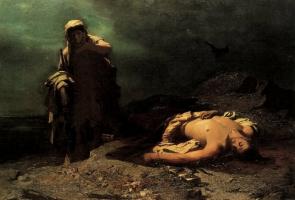Futurism: characteristics, representatives and works
Futurism was an Italian avant-garde movement that became known on February 20, 1909, when the newspaper Le Figaro published in Paris on Futurist manifesto, written by the poet Filippo Tommaso Marinetti. It sought to express the values and experiences of the machine age —speed, energy and force—, revolutionizing the techniques and language of literature and the arts. For this reason, it took as its name the term futurism, which means 'movement oriented towards the future'.

It was born as a literary movement, but a year after the publication of the manifesto, futurism creeps in among Italian artists, who, imitating their founder, express themselves in the publication of various manifestos. Namely: Futurist Painters Manifesto (1910); Futurist sculpture manifesto (1912); Manifesto The art among the noises, dedicated to music (1912), and Futurist architecture manifesto (1914).
Although Futurism was an Italian movement, it had an important international impact thanks to its capacity for self-promotion and its radicalism. He influenced artists such as Marcel Duchamp and Joseph Stella, the latter based in New York. Similarly, it influenced trends such as Cubofuturism and Russian Rayonism.
Characteristics

Break with aesthetic tradition
The rejection of the aesthetic tradition of the 19th century was a common element of all avant-garde movements, including Futurism. That generation was tired of the standardization of art, and realized that the world had changed. Art had to change too.
Celebration of the machine age
Futurism was conceived at the end of a generation marked by the Second Industrial Revolution (1870-1914), in which the pair of scientific knowledge and technology was responsible for a profound transformation. There were those who viewed this with mistrust; but the Futurists saw the omen of a glorious time dominated by the machine.
The futuristic utopia even reached the idea of the human being, who aspired to become a superman. Automobiles, telegraphs and airplanes looked to the Futurists as a true qualitative leap in civilization, as an inexhaustible universal promise of evolution.
Restlessness about the fourth dimension (time)
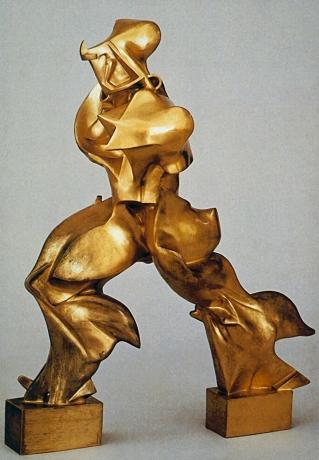
Time plays a leading role in futuristic art. It cannot be otherwise if the movement founds its name in the dialectic of time. Assuming the term "futurism" as a name implies a reflection on the past and the present.
However, it is not clear whether the view of Futurism was in the future or in a position regarding the past. At least in terms of painting, historian Eric Hosbbamw points out that this and other avant-gardes suffered from a great paradox: interpreting the era of machinism with pictorial means of the nineteenth century, such as the painting of easel.
Glorification of patriotism, violence and machismo

Futurism was identified with extreme nationalism. Hence, they considered it, years later, as an antecedent of fascism. Its writers and artists became outspoken promoters of militarism and war, to the point that many enlisted in the First World War. Most died on the front lines, others were seriously wounded. This precipitated the end of the movement, although not of aesthetics. Richard Humphreys argues:
For them, Futurism was a philosophy of life, with great political concern, and rooted in the rejection of a set of forces, which they believed hostile to the growth and modernization of Italy. The insistence on the destruction of Italy's heritage is part of that rejection. Violent action, whether in life or in art, was considered the antidote to political, cultural and psychological lethargy.
The drive between sexuality and machine was also felt in Futurism, openly opposed to any feminist initiative or perspective.
Exaltation of speed as Beauty
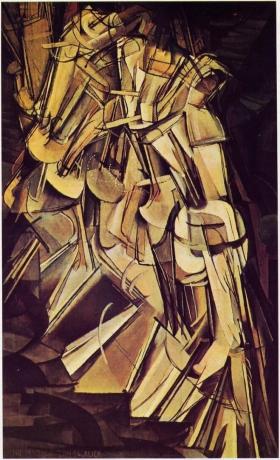
How to express the machine age in art? The machine meant for the futurists movement, revolution in its technical and social sense at the same time. For this reason, they tried to interpret movement and speed in artistic work, whether on canvas, in matter or in words. The same was true of energy and the expression of force. The goal was to capture the shape of speed described in space, rhythm and vitality.
However, according to researcher Richard Humphreys in his book Futurism: movements in modern artFuturism wants to express speed and movement, but machines are rarely represented in his works.
Dialogue with other aesthetics and avant-gardes
Futurism was not unaffected by the influences of contemporary art and aesthetics. In the Dictionary of 20th century art, Ian Chilvers argues that, regarding the visual arts, Futurism was influenced by Divisionism, based on the decomposition of the image into colored points, and on cubism, which incorporated multiple planes into one only.
It may interest you: Kinetic art: its characteristics and most important artists
Futuristic literature
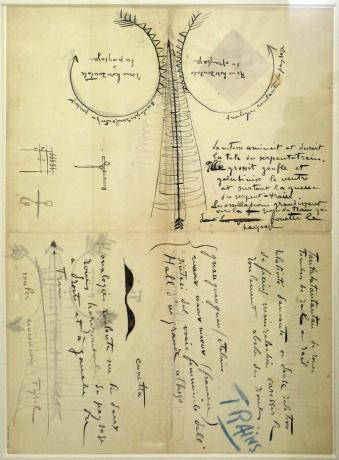
From the formal point of view, the characteristics of Futurist literature were the following:
- Freedom of speech as the guiding principle.
- Assessment of writing as a graphic phenomenon, that is, visual.
- Typographic revolution: use of different fonts, colors and layout criteria.
- Destruction of syntax as a founding principle.
- Break with the metric.
- Use of barbarisms and infinitives.
- Recurrence of exclamations and interjections to enhance vitality.
- Arbitrary use of punctuation marks.
He may also interest you:
- Literary vanguards
- 15 avant-garde poems
Futuristic painting

Albright – Knox Art Gallery, New York.
As for the visual arts, Futurism was much more active and prolific in painting than in sculpture. However, both share similar principles. Among the characteristics of futuristic painting, at the formal level, we have the following:
- Principle of "lines of force", which favored the interrelation and fusion between objects and their environment.
- Principle of continuity of the plastic space.
- Rhythm and dynamism.
- Vibrant and energetic color in the paint.
- Frequent angularity.
- Geometric decomposition.
- Crossing of different planes in a single plane.
- Use of the multiple photographic exposure technique (sequence of successive images in one second that, when superimposed, generate the perception of displacement), created by Giacomo Balla.
Representatives and works of Futurism
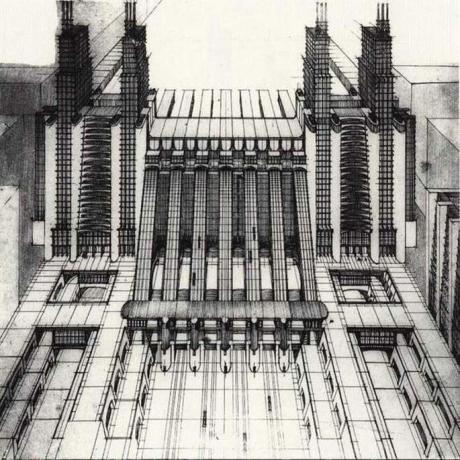
Authors
- Filipo Tommaso Marinetti (1875-1944). Writer, poet, playwright, ideologue and editor. Founder of Futurism. Futurist manifesto; Mafarka the Futurist; The indomitable.
- Mario Carli (1888-1935). Novelist, essayist, poet, journalist and diplomat. My divinity; Arditism.
- Julius Evola (1898-1974). Philosopher, ideologue, esotericist and painter. Revolt against the modern world; Ride the tiger.
Plastic artists
- Giacomo Balla (1871-1957). Painter and sculptor. Car speed; Arc lamp; Dynamism of a dog on a leash.
- Umberto Boccioni (1882-1916). Painter and sculptor. Writer of the Futurist sculpture manifesto. Sculpture: Unique forms of continuity in space. Painting: Dynamism of a cyclist.
- Carlo Carrà (1881-1966). Painter. Funeral for the anarchist Galli.
- Gino Severini (1883 - 1966). Painter. The haunting dancer, Blue Dancer, North-South.
- Luigi Russolo (1885-1947). Painter and composer. Manifesto Writer The art of noise. Among his paintings: Dynamism of a car. Among his music: Il risveglio di una città.
- Antonio Sant'Elia (1888-1916). Architect. Writer of the Futurist architecture manifesto. Project Città Nuova.
See also Artistic movements of the 20th century

